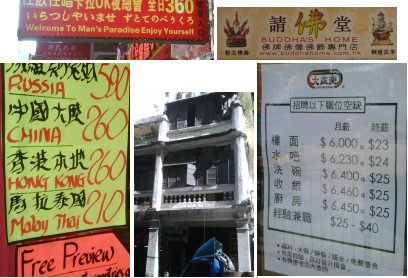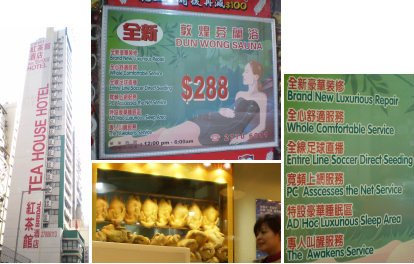Time for my annual inspection tour of upper Kowloon – a distant area of which we know little and usually care even less. It is worth an occasional visit, however, not just to check that it is still there, but for the sensation of stepping back in time to the Hong Kong of a couple of decades ago.
With the majority of buildings no more than 11 storeys high, you can see more than a narrow strip of sky above you. There is space on the sidewalks, and the traffic is so light that you can cross the backstreets back and forth at will as you wander around. This hardly makes it a ghost town, but after Central it is a joy simply to be able to walk around like we did in the old days. The local inhabitants prompt another pang of nostalgia: they are visibly stuck at a 1980s-level of economic development, before the rising middle class conquered much of the city and started dressing themselves and their dogs up in Gucci.
Part of this neighbourhood is best-known as a red-light district, and signs – ‘signage’, indeed – of the world’s second-oldest* profession are common. The price structure demands an explanation. I would guess Russian girls (or their managers) charge extra for big, blond, busty exoticism and scarcity value. The equality of price between Hongkongers and Mainlanders perhaps reflects the strengthening Renminbi. That between Thais and Malaysians is odd; the latter country is richer and less populous, but obviously there’s a demand-side to consider too.
Compare and contrast with the pay on the help-wanted ad at Café de Coral a hundred yards down the road. This is the chain dubbed ‘Café de Cruel’ for its no-nonsense approach to employee remuneration in advance of Hong Kong’s new minimum wage, which prompted a boycott and a climbdown. By law, all these positions will have to be paid at least HK$28 an hour as of next year. Waiting staff get the lowest amount; you get a few bucks more for washing up. I don’t think being Russian would help.
Further along, and we encounter a different sort of vice in the form of one of the HK Jockey Club’s gambling dens.
Interestingly, this one happens to have Mary the Tarot Augur upstairs, which must be convenient. (Note the sprawling business premises an oracle can afford in this part of town.) No doubt she gives you a refund if her fortune-telling cards predict the wrong horse.
It’s not all unwholesomeness. Mainland tourists like to stay in the area’s cheap lodgings, like the pencil-tower Bridal Tea House Hotel. And the Dun Wong Sauna looks reasonably above-board, offering – in the sort of poor English I like to think you would expect from an innocent provider of platonic steam bath services – soccer on cable TV and a wake-up call. A sordid hooker-merchant would have done a better translation job, surely.
It says something about so-called progress that these days you have to go all the way over to the other side of the harbour to find an ad-hoc luxurious sleep area.
* Midwifery came first, so they say.




More sex, more cheap rooms, more plastic!!!
Conventional wisdom seems to be that propstitution came first, followed by translation. But there are understandably numerous contenders to the top spots.